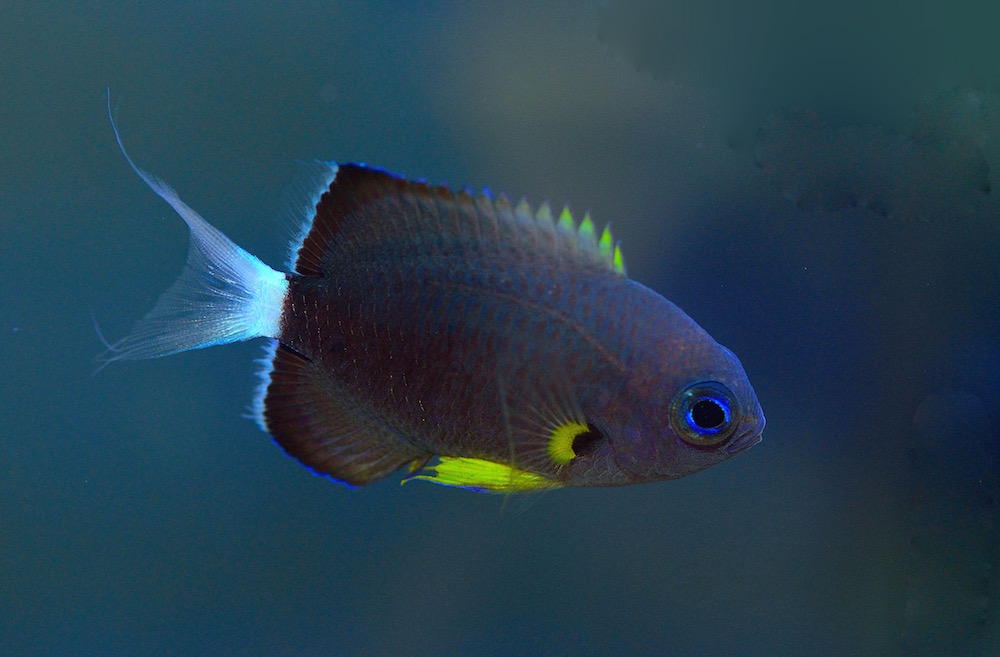I like damselfish. I like Chromis even more. But if there’s one Chromis that I love, it’s Chromis leucura. Chromis leucura is a diminutive species that is often found in small groups along deep reef walls and ledges ranging from 20-120m (65-400ft). This species gets its name for its white tail, which is often tipped with extremely long and wispy filamentous extensions.

C. leucura is variable with a ground coloration of inky-grey to deep navy. The anterior dorsal spines are yellow tinged, and the pelvic fins are entirely chartreuse yellow. A large black spot is present on its pectoral fin base, and this spot is ringed in the same shade of yellow as its other fins. Both dorsal and anal fin termens are near vertical and extremely straight, which gives this species a rather unique appearance.
Its caudal fin is white and both lobes are tipped on the outermost point with two to three variably long and wispy filaments. This characteristic is shared with a few species, all of them attaining sizes no larger than 2.5 inches. The photographic collage above features two other Chromis species that are apparently closely related and sympatric in Japan. These are Chromis delta and C. alleni.


C. leucura has a patchy and scattered distribution in both Oceans. In the Pacific, it can be found quite regularly in Hawaii, Marquesas and Japan. In the Indian Ocean, this species has been reported in Mauritius and the Réunion Islands. Because of its fondness for deep waters, its very likely that this species has an undocumented larger and more extensive geographical distribution. Case in point, Australia.

This single specimen collected from the Coral Sea by Cairns Marine on the east coast of Australia presents a new range extension for this species. The disjunct distribution between Japan and Australia is likely anomalous, and its presence within the connecting Indonesian and Philippine regions should be looked out for.

The filamentous tail extensions and straight fin termens of C. leucura is recalled in an undescribed species from the French Polynesia. Unlike the more widely distributed C. leucura, this species is strictly deepwater and is not uncommon at depths exceeding 300ft. It is not known if the two are phylogenetically related, but it’s not everyday you encounter a little damsel with pretty fins and a less than bellicose disposition.



